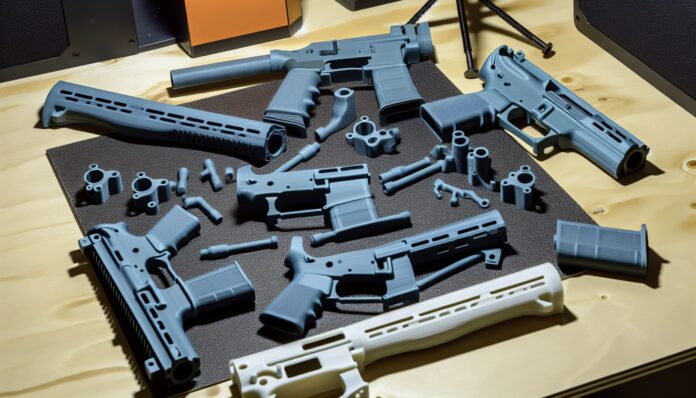Authorities on Long Island have arrested a man after discovering a cache of 3D-printed ghost gun components in his home, underscoring the growing concern over the use of additive manufacturing in the illegal production of firearms.
3D Printing and the Rise of Ghost Guns
Ghost guns—unserialized, untraceable firearms—have become a major concern for law enforcement agencies across the United States. These weapons are often assembled from parts that can be legally purchased or manufactured using 3D printers. Because they lack serial numbers, ghost guns are difficult to trace, making them attractive to individuals seeking to bypass background checks and other legal restrictions.
In this recent case, Suffolk County police executed a search warrant at the home of 38-year-old Joseph DeLuca in Ronkonkoma, New York. Inside, they found multiple 3D-printed gun parts, including lower receivers and other components that could be used to assemble fully functional firearms. DeLuca was arrested and charged with multiple counts of criminal possession of a weapon.
How 3D Printing Enables Untraceable Firearms
3D printing, also known as additive manufacturing, allows users to create complex objects layer by layer from digital models. While the technology has revolutionized industries from aerospace to healthcare, it has also introduced new challenges in law enforcement. With access to a 3D printer and downloadable CAD files, individuals can produce key firearm components at home, bypassing traditional manufacturing and regulatory oversight.
In the U.S., it is legal to manufacture a firearm for personal use, but it becomes illegal when the weapon is sold, transferred, or lacks a serial number. The Bureau of Alcohol, Tobacco, Firearms and Explosives (ATF) has been working to close loopholes and regulate the distribution of ghost guns, but enforcement remains difficult due to the decentralized nature of 3D printing.
Legal and Regulatory Implications
DeLuca’s arrest is part of a broader crackdown on ghost guns in New York State. Governor Kathy Hochul and Attorney General Letitia James have both emphasized the need for stricter regulations and enforcement to combat the proliferation of untraceable firearms. In 2022, New York passed legislation banning the sale and possession of ghost guns and requiring all firearms to have serial numbers.
Despite these efforts, the accessibility of 3D printing technology continues to pose a challenge. Open-source communities and online forums often share blueprints for gun parts, making it difficult to control the spread of this information. Law enforcement agencies are increasingly investing in digital forensics and surveillance to track the distribution of these files and identify individuals engaged in illegal manufacturing.
The Role of the 3D Printing Community
While the misuse of 3D printing for illegal firearm production is a serious concern, it’s important to note that the vast majority of the 3D printing community uses the technology for legitimate and innovative purposes. From prototyping and product development to medical devices and art, additive manufacturing continues to drive progress across multiple sectors.
Industry leaders and advocacy groups are also stepping up to address the issue. Some 3D printer manufacturers have implemented restrictions on the types of files that can be printed, while others are working with law enforcement to identify and prevent misuse. Educational initiatives are also underway to inform users about the legal and ethical implications of 3D printing firearms.
Looking Ahead
The arrest of Joseph DeLuca serves as a stark reminder of the dual-use nature of 3D printing technology. As the capabilities of desktop 3D printers continue to advance, so too does the potential for misuse. Balancing innovation with public safety will require ongoing collaboration between policymakers, law enforcement, and the 3D printing industry.
For now, the case highlights the importance of vigilance and regulation in the face of rapidly evolving technology. As authorities continue to adapt, the hope is to curb the illegal use of 3D printing while preserving its transformative potential.
Source: ABC7 New York

